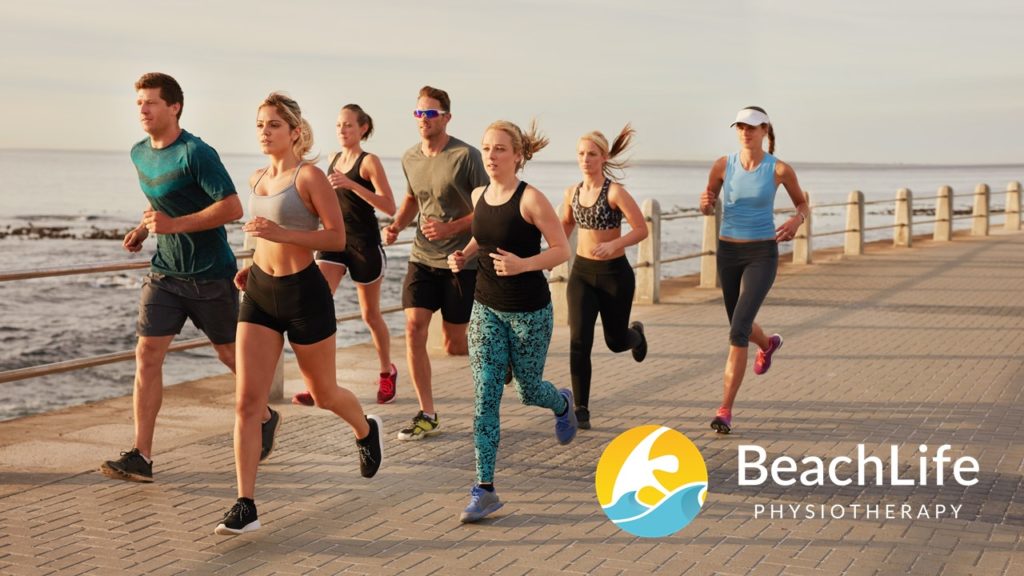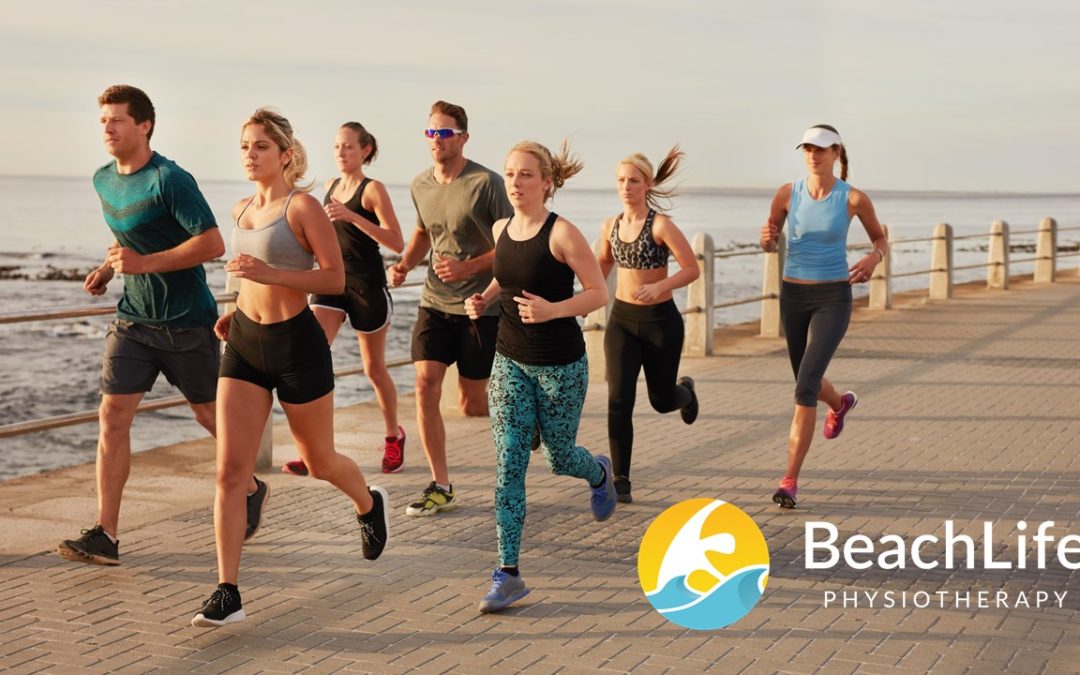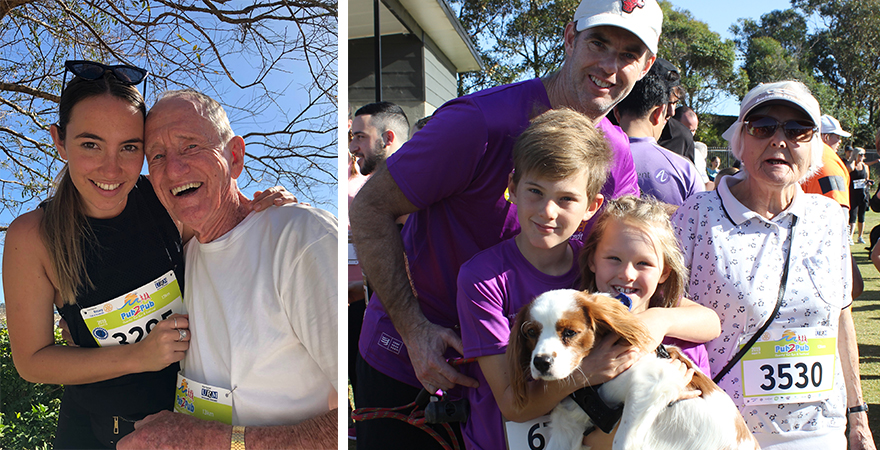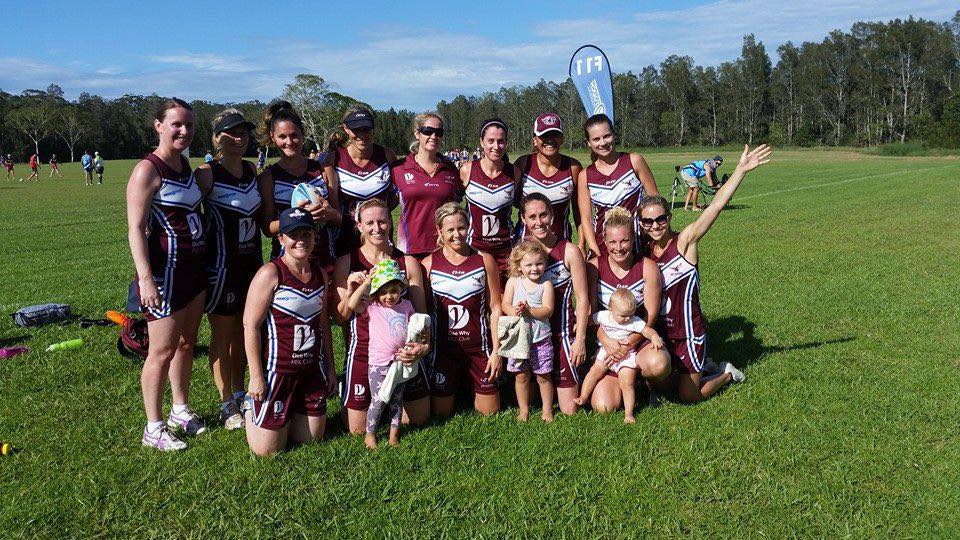How to Prevent Common Running Injuries
July 4, 2018
Most running injuries (between 50-75%) can be attributed to overuse, due to the repetitive movements involved in running. The most common conditions reported by runners are patellofemoral pain and plantar fasciitis. In this article, BeachLife Physiotherapy describes some of the common causes of pain in runners and provides strategies you can use to prevent them.
Patellofemoral pain also known as “runners knee” is characterized by irritation and inflammation of the underside of the patella. The pain is usually felt when running, long periods of sitting and when walking downstairs or downhill. Patellofemoral pain in runners can be caused by incorrect tracking of the knee cap over the knee joint. This can be due to weakness in the quadriceps or the gluteus medius muscles.
Iliotibial band (ITB) friction syndrome is sometimes associated with patellofemoral pain. This pain will also be worst with downhill walking and running or going down stairs. The ITB is a band of connective tissue which runs down the outside of the thigh. With repeated bending and straightening of the knee as we run, there can be an increase in the friction between the ITB and other structures on the outside of the knee, causing pain. This is often a result of poor running technique and strength imbalances, particularly weakness in hip stabilizers.
Plantar fasciitis is caused by a failure of the connective tissue on the sole of the foot, called the ‘plantar fascia’, to support the weight of the body during loading. There is excessive pulling on the fascia which runs from the heel to the ball of the foot. Runners who have ‘flat feet’ or high arches are at risk of developing plantar fasciitis due to increased strain on the fascia. Other associated factors include tightness in calf, hamstring and gluteal muscles. The onset of pain is usually gradual over the heel, and can feel like walking on glass when the pain is extreme.
Achilles tendinopathy is caused by overload and tightness in the calf muscles, the gastrocnemius and soleus, resulting in irritation and inflammation of the achilles tendon. Pain can be felt with contraction or stretch of the muscle and it is often more painful in the morning or after cooling down from exercise.
Shin splints, also known as medial tibial stress syndrome, is an inflammatory condition effecting the front section of the tibia (shin bone). The symptoms will often worsen following exercise and ease with warming up. The pain gradually increases over time and becomes more frequent. There has been some debate surrounding the causes. Factors including flat feet, poor technique, fatigue, muscle dysfunction and reduced flexibility have been found in patients with shin splints.
What can you do to prevent these injuries?
- Plan a graded running program, involving a gradual build up of distance and speed.
- Include a dynamic warm up before your run.
- Cool down after your run, such as a light run or walk, static stretching and using a foam roller to release muscles.
- Look out for the early signs of injury; such as minor pain, a change in your running technique or reduced flexibility.
- Get a running technique assessment from your coach, trainer or physiotherapist.
- Maintain good hydration throughout your run.
- Check your shoes and watch out for signs of wear on the sole. The general recommendation is to replace shoes every 600-700km.
- If you have a previous injury, ensure it is properly rehabilitated under the guidance of a physiotherapist.

![Rotary Official logo RC Warringah[6]](https://beach2beach.com.au/wp-content/uploads/Rotary-Official-logo-RC-Warringah6.jpg)



